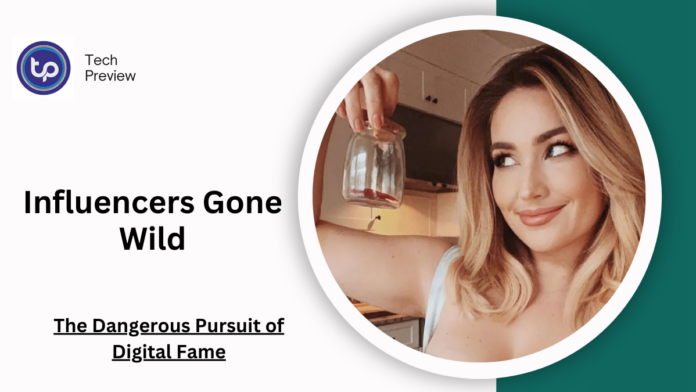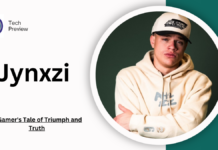In the ever-evolving world of social media, influencers have become the new age celebrities, with millions of followers tuning in daily to witness their lives, style, and opinions.
However, with great influence comes great responsibility — a responsibility that some influencers are willing to overlook in pursuit of fame, attention, and engagement.
The term “influencers gone wild” has emerged to describe social media personalities who push the boundaries of acceptable behaviour, often risking their reputation, mental health, and even their career in the process.
In this article, we will explore the origins of this phenomenon, its psychological underpinnings, and the impact it has on influencers and their audience.
What Does “Influencers Gone Wild” Really Mean?
The phrase “influencers gone wild” refers to influencers who engage in extreme, often controversial behaviour in order to gain attention or increase their following. This can manifest in a number of ways, including:
- Staging Risky or Dangerous Stunts: Influencers performing extreme challenges or stunts to gain likes and shares.
- Controversial or Explicit Content: Posting material that may be deemed inappropriate or distasteful.
- Public Controversies or Scandals: Getting involved in disputes, legal troubles, or public drama to create headlines.
- Promoting Unhealthy or Unsafe Lifestyles: Encouraging behaviours or products that are deemed unsafe or damaging.
This behaviour is often driven by the need to stay relevant in an age of fleeting trends, where influencers must constantly top their previous content to keep the audience engaged.
The viral nature of social media has only amplified this dynamic, where shocking and outrageous content is more likely to grab attention and go viral.
The Motivation Behind Reckless Actions
At the core of most “wild” influencer behaviour is the thirst for attention. Social media thrives on engagement — likes, shares, comments, and views — which often translate directly into fame and financial opportunities.
Influencers are acutely aware that the more attention they garner, the more successful they are. As a result, some may resort to shocking or inappropriate actions to stand out from the crowd and stay relevant.
In the fast-paced world of social media, trends can change overnight. One viral video can lead to weeks of fame, but once the novelty wears off, influencers can quickly find themselves sidelined.
To avoid being forgotten, some influencers turn to increasingly wild behaviour, thinking that outlandish content will keep them in the spotlight.
MUST READ: Ron Filipkowski: Shaping Political Discourse with Legal Insight on Twitter
Competition Among Influencers
Influencers often compete for the same audience, sponsorships, and opportunities. The pressure to “one-up” each other can lead to risky behaviours as influencers try to push the envelope in order to gain more views and followers.
This peer pressure to outdo each other can escalate quickly, creating a race to shock and entertain at any cost.
Social Media Feedback Loop
The positive reinforcement of social media — the likes, comments, and shares — acts as a form of validation for influencers. The more engagement they receive, the more they feel justified in their behaviour.
This feedback loop can encourage them to take things further, escalating their antics in a bid to keep the digital approval flowing.
ALSO READ: La Casa de los Famosos Vota: The Reality Show Where Fans Decide the Outcome
The Cost of Recklessness: Consequences for Influencers
While “wild” behaviour can lead to short-term attention, the consequences can be significant and long-lasting. Let’s explore the possible fallout for influencers who engage in risky actions.
Reputation Damage
The most immediate consequence of an influencer going wild is the potential damage to their reputation. Once an influencer is associated with negative or controversial behaviour, it can be incredibly difficult to undo the damage.
Followers who once admired them for their style, humour, or insight may unfollow them when their actions cross a line.
Loss of Sponsorships and Partnerships
Brands are increasingly mindful of who they associate with. An influencer’s controversial behaviour can jeopardize lucrative brand deals and sponsorships.
Companies often prefer to partner with influencers who align with their values and present themselves in a responsible manner. When influencers engage in reckless actions, they risk losing these valuable relationships, which can have a significant impact on their income.
Legal and Financial Consequences
Some influencers have faced legal repercussions for their actions, particularly when it comes to promoting unsafe behaviors, breaking laws, or engaging in actions that have been deemed harmful or exploitative.
Whether it’s facing a lawsuit or violating platform guidelines, these legal troubles can not only affect an influencer’s public image but also result in financial losses.
Mental Health Implications
The constant pressure to stay relevant and the fallout from reckless behaviour can take a toll on an influencer’s mental health. Anxiety, depression, and burnout are common issues faced by influencers as they try to balance their public persona with their private lives.
The scrutiny they face from the public, coupled with the stress of maintaining a constant stream of attention-grabbing content, can leave them feeling overwhelmed and isolated.
Noteworthy Examples of Influencers Who Went Wild
There have been several high-profile cases of influencers engaging in extreme behaviours that captured the public’s attention. Here are some notable examples:
Logan Paul
In 2017, Logan Paul sparked outrage with a video he posted from Japan’s Aokigahara Forest, a location known for being a suicide hotspot. The video, which showed a deceased body, was widely condemned as insensitive and exploitative.
Logan Paul faced significant backlash, lost sponsorships, and temporarily halted his YouTube career in the wake of the incident. Despite the controversy, Logan Paul continued to be a prominent figure, though his reputation was severely damaged.
Tana Mongeau
Tana Mongeau, known for her controversial and often provocative content, made headlines with her failed event, “TanaCon.” The event, meant to rival VidCon, was poorly planned, leading to chaos and frustration among attendees.
Mongeau faced backlash for the disaster, which tarnished her image, even though it brought her more fame.
Belle Delphine
Belle Delphine is an influencer who made waves by selling her bathwater online, a stunt that was both shocking and bizarre. The act gained her widespread attention, but also sparked outrage.
Delphine’s provocative and often sexualized content has made her a polarizing figure in the influencer world, demonstrating how outrageous actions can both intrigue and alienate followers.
The Ripple Effect: Impact on Social Media and Followers
The consequences of influencers’ reckless behaviour extend beyond their personal lives and careers; they also have far-reaching implications for their followers and the broader social media landscape.
Normalizing Harmful Behavior
When influencers engage in wild stunts or post controversial content, they set a precedent for their followers. Younger and more impressionable audiences may start to see such behaviour as acceptable or even desirable.
This can normalize dangerous or inappropriate behavior and encourage followers to mimic their actions, sometimes with negative consequences.
Influence on Mental Health
The pressure to emulate influencers can have a serious impact on mental health, particularly for younger audiences. The constant comparisons to influencers’ seemingly perfect lives, body images, and daring behaviour can lead to anxiety, body dysmorphia, and other mental health struggles.
Furthermore, seeing influencers engage in reckless behaviour can contribute to the normalization of unhealthy practices.
Brand and Platform Responsibility
Brands and social media platforms have an important role in addressing the “influencers gone wild” trend. While brands often seek influencers for marketing campaigns, they must carefully evaluate whether partnering with certain individuals aligns with their values.
Social media platforms, too, must enforce guidelines that promote ethical behavior and hold influencers accountable for their actions.
Conclusion
The rise of “influencers gone wild” is a complex phenomenon that reflects the pressures, rewards, and pitfalls of social media fame. While the desire for attention and validation drives many influencers to push the boundaries of acceptable behaviour, the consequences of such actions can damage both the influencer and their audience.
As the digital landscape continues to evolve, influencers, brands, and social media platforms need to foster a culture of responsibility, accountability, and mental well-being, ensuring that the influence they wields is used for good.
People May Ask
1. Why do influencers engage in extreme or controversial behavior?
Influencers often push the limits of acceptable behavior to maintain relevance and gain attention in a highly competitive digital space. The desire for fame, validation, and increased engagement can drive them to perform extreme stunts or share controversial content.
2. What are the consequences for influencers who “go wild”?
The consequences can range from loss of sponsorships and damage to reputation to legal troubles and mental health struggles. Public backlash can also affect an influencer’s ability to maintain their online presence.
3. How does wild behaviour impact an influencer’s followers?
Followers, especially younger audiences, may start to view reckless or controversial behaviour as normal or even aspirational. This can contribute to the normalization of harmful behaviours and mental health challenges.
4. Can influencers recover from controversial actions
Recovery is possible, but it requires transparency, accountability, and a shift in behaviour. Influencers must work to rebuild trust with their audience and make amends for their actions, but it can take time and sustained effort to repair a damaged reputation.
Click here to learn more.









